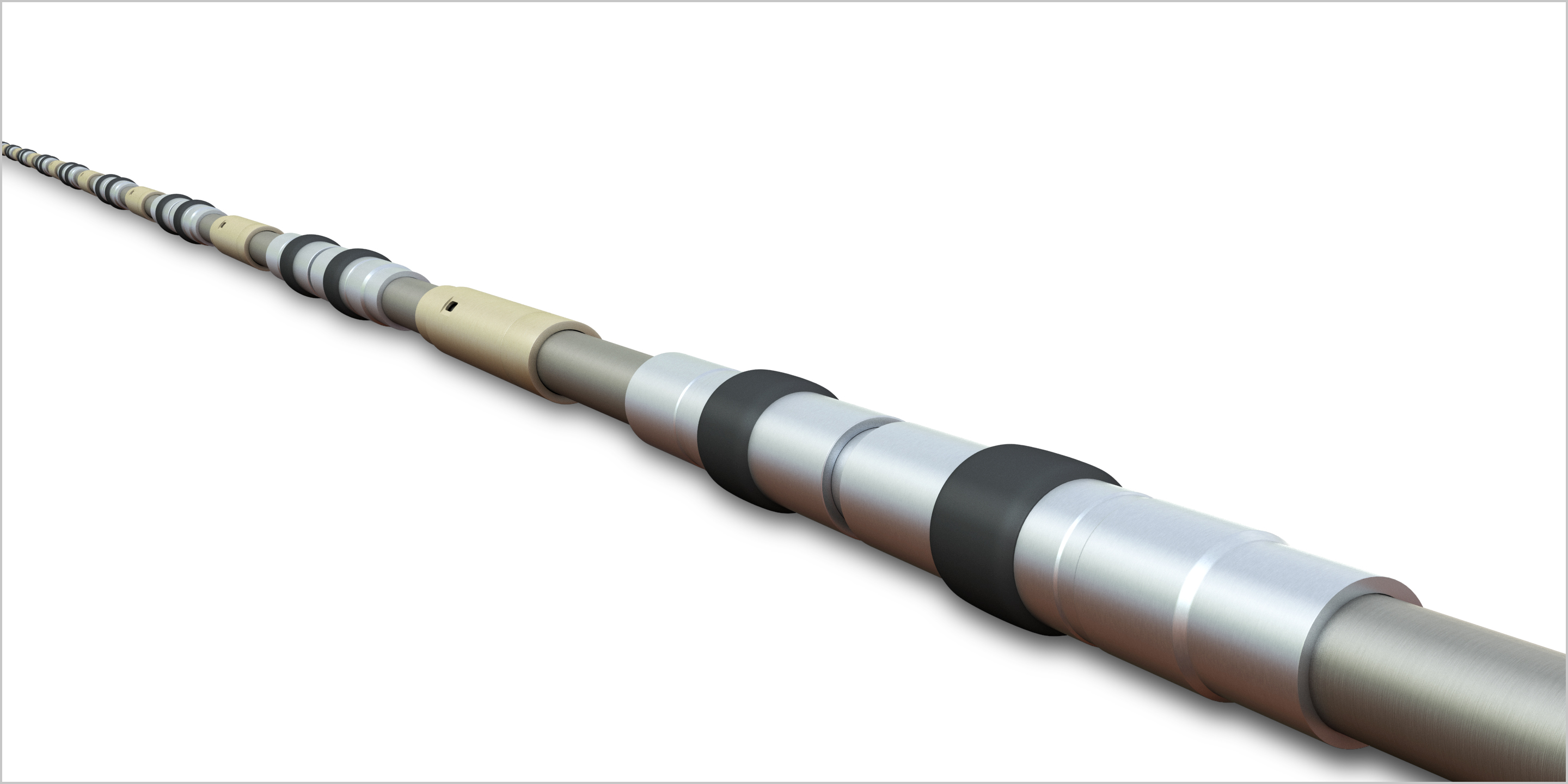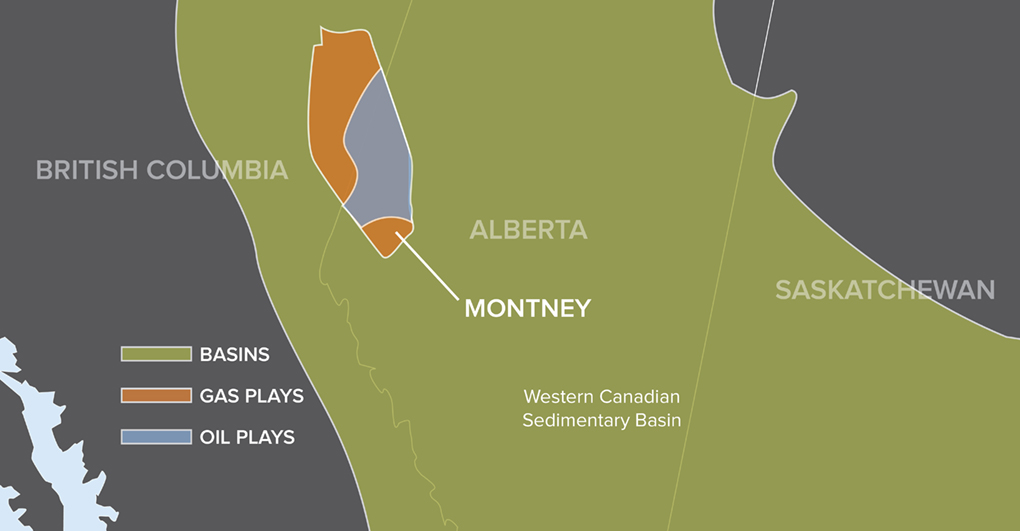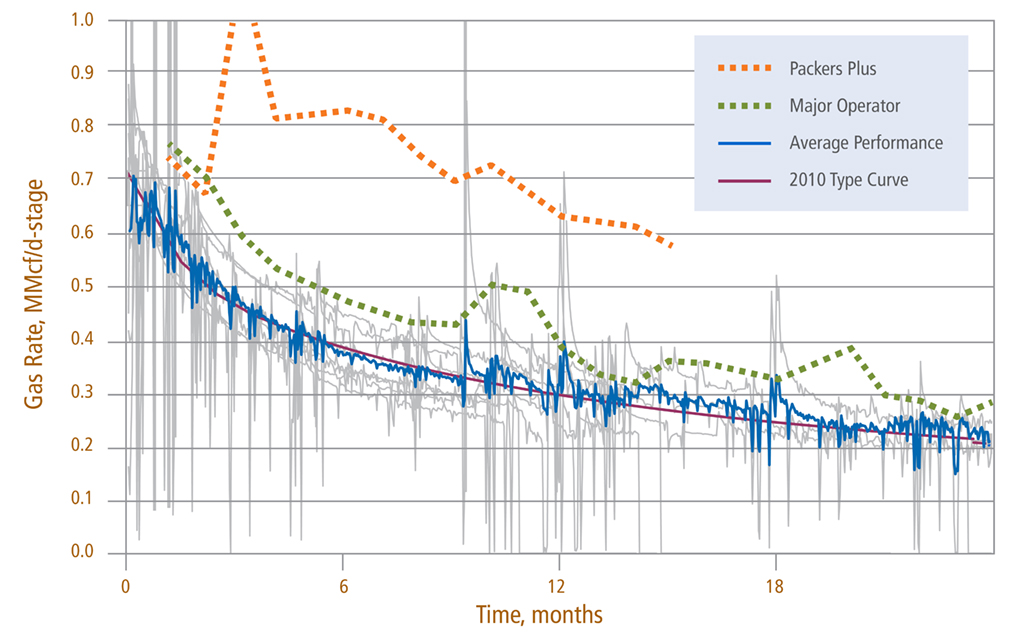StackFRAC system outperforms cemented liners in shale gas reservoir

Background

The Triassic Montney formation straddles the border between Alberta and B.C. and covers an area of approximately 246,000 km². Gas reserves in the resource play have been estimated to be as high as 700 Tcf. Due to its rich silt and sand composition, the Montney is often referred to as a tight gas reservoir; however, the natural gas found within the formation is generated in place, a characterization more typical of shale gas reservoirs. The play is considered to be one of the biggest natural gas resources in North America.
Advancements in technological innovations have allowed for the exploitation of unconventional plays such as tight gas and shale reservoirs. Horizontal drilling and multi-stage fracturing enable operators to extract resources that were previously considered to be uneconomical to produce, and as such have significantly impacted the oil and gas industry.
Challenge
The use of horizontal multi-stage completion methods to successfully exploit shale and sandstone formations has become commonplace in Canada. Despite this, the optimal completion method and exact parameters affecting optimization have yet to be fully understood. An operator working in the Lower Montney sought to create an effective completions strategy that would reduce costs and save time during stimulation operations.
The operator used two different horizontal completion methodologies to complete their wells: the Packers Plus StackFRAC® open hole multi-stage fracturing system and cemented liner "plug and perf." Time, cost and production data was analyzed from each well in two areas to determine the optimal method to complete future wells.
Solution
Both completion methods increase access to the reservoir by inducing fractures along the entire length of the horizontal wellbore, but they have significantly different operations. StackFRAC is an open hole multi-stage completion system which allows for stimulation to be completed in a single, continuous pumping operation. Sections of the wellbore are isolated using hydraulically activated, mechanically set RockSEAL® ll packers. FracPORT™ sleeves are set in between each packer and are actuated by dropping successively larger balls from surface and then opened using hydraulic pressure to provide access to the formation. Conversely, cemented liner completions require cementing of the casing and pumping down of bridge plugs conveyed by coiled tubing in order to achieve mechanical isolation. Each zone is perforated in order to initiate fracturing operations. After all stages are stimulated, the bridge plugs are removed by milling operations.
A study was conducted which analyzed 8 StackFRAC system completed wells and 7 cemented liner completed wells, separated into two areas: Pod 1 and Pod 2. Comparisons of average daily and cumulative production data, lateral lengths, stage spacing, number of stages, proppant volumes and pump rates were conducted for each well.
Results

The study showed that after 14 months of production, the average daily production per fracture stage of the open hole wells in Pod 1 was 38% greater than the cemented liner completed wells (7,000 vs. 5,100 m³/d, Figure 1). Additionally, average cumulative production in Pod 1 was 36% greater on a per fracture stage basis than the average of cemented liner completed wells (4.30 vs. 3.15 million m³). These results were mirrored in Pod 2 with 28% higher average daily and 32% higher average cumulative production after 16 months with StackFRAC system completions.
In addition to the production benefits achieved by the StackFRAC wells, Figure 2 shows the average time to perform stimulation operations was approximately 45% less than the cemented liner completed wells (Pod 1 - 4.5 vs. 8.3 days; Pod 2 - 3.5 days vs. 6.3 days). The open hole wells also realized a significant cost savings shown in Figure 2. In Pod 1, the average total job cost of each open hole well was 22% less at $1.8 million compared to $2.4 million for each cemented liner well. In Pod 2, the average total job cost for each open hole well was 49% less at $1.4 million compared to $2.8 million for each cemented liner well.
Operators working in unconventional reservoirs continue to seek time and cost reduction strategies to maximize their assets. Packers Plus StackFRAC open hole systems are a field-proven, efficient and cost-effective method to completing horizontal multi-stage wells and provide superior production results in numerous formations around the world.
